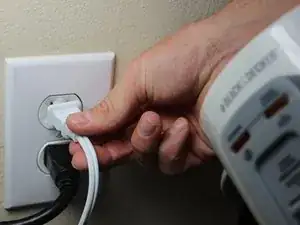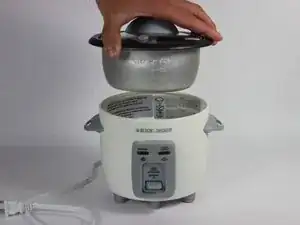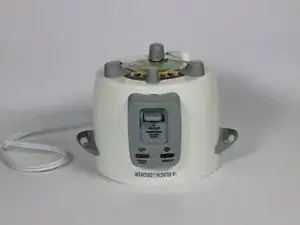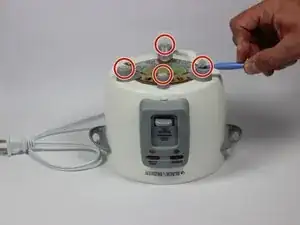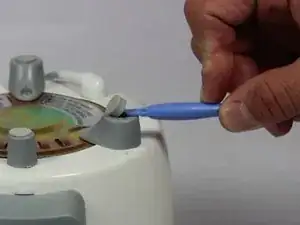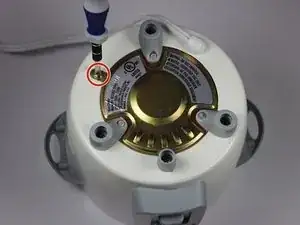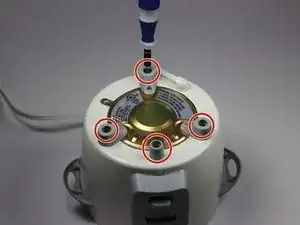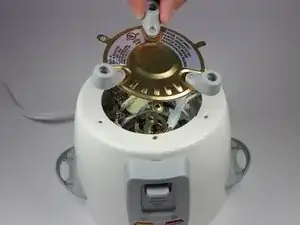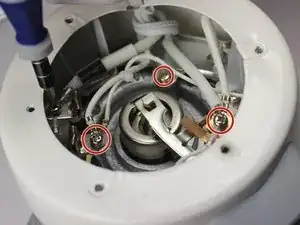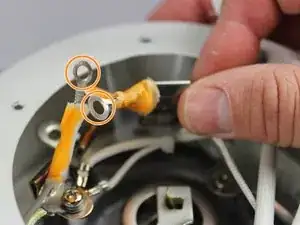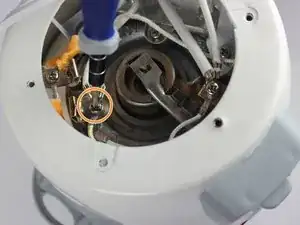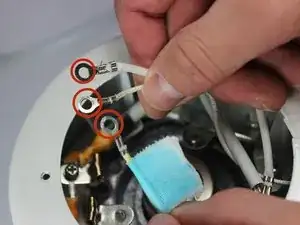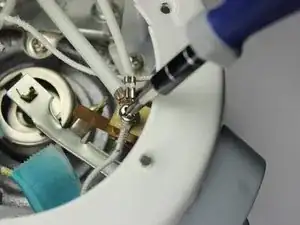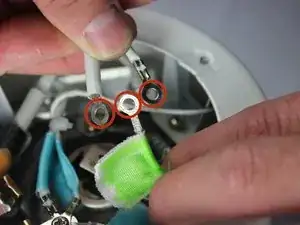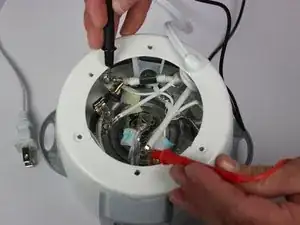Einleitung
The device's power cord breaks easily, stopping it from delivering power to the device. In this guide, we will test for power by using a voltmeter.
Werkzeuge
-
-
Each of the four legs has a rubber cushion on its bottom. For each cushion, insert a plastic opening tool between the plastic leg and rubber cushion, and pry off the rubber cushion.
-
-
-
Using a spanner screwdriver, remove the one 10mm long 7mm diameter spanner screw from the side of the brass panel.
-
-
-
Using a Phillips screwdriver, remove the 10mm long 7mm diameter Phillips-head screws from the inside of all four legs.
-
-
-
Unscrew the screw at the junction near the opposite side of the device from the front panel.
-
Label each of the two wires at this junction with a single color of tape.
-
-
-
Unscrew the screw at the junction just clockwise from the button panel.
-
Label the three wires of this junction with tape of a second color.
-
-
-
Unscrew the screw from the wire junction just behind the front panel.
-
Label the three wires at this junction with a third color of tape.
-
-
-
Locate the two wires which are connected directly to the power cord. Unlike the other wires, they are sheathed in a particularly thick, dot-textured plastic.
-
Make sure the voltmeter is on and set to a setting beween 120 and 500V. For most voltmeters the proper setting for this is the 200V setting.
-
Attach one of the voltmeter's probes to the metal portions of each of the two wires connected to the power cord's end on the device
-
The voltmeter should read a number significantly above 20V. A reading between 100 and 150 V indicates that the device is getting enough power. A lower number indicates the power cord is broken.
-
This guide alters no parts of the device, so no reassembly is needed from these steps.
